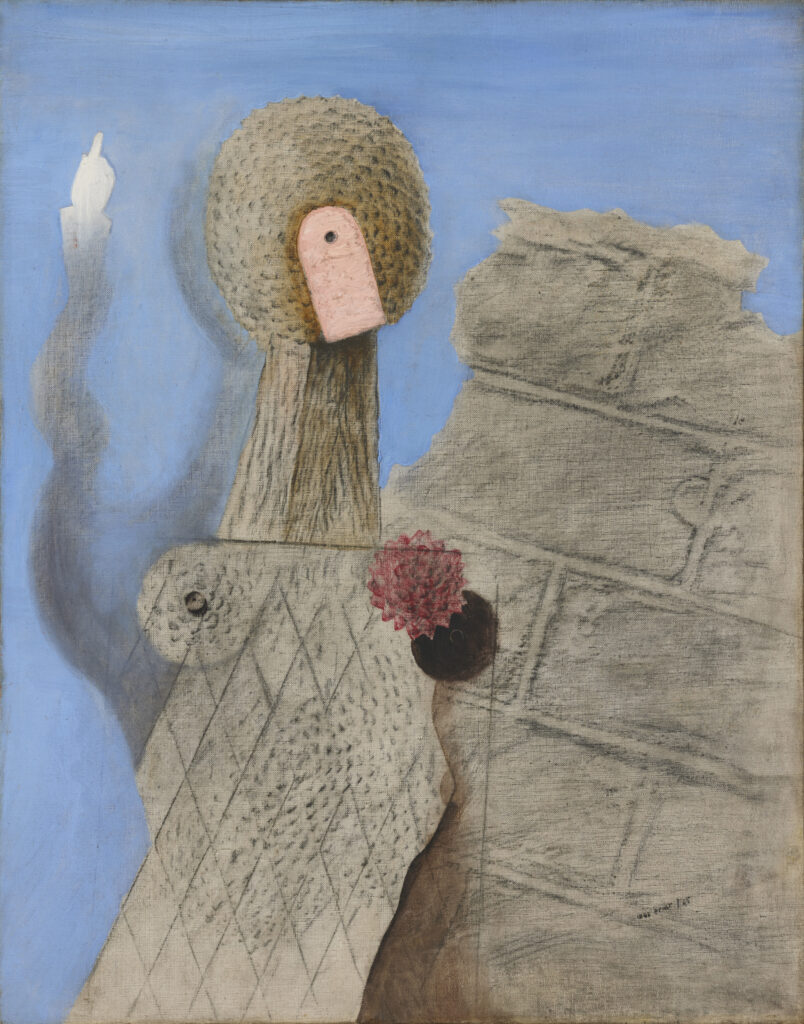Watch, Read, Listen
Recent Additions to the Collection MOMAT Collection Newsletter of the National Museum of Modern Art, Tokyo Max Ernst, Desert Flower (Desert Rose), 1925
Back
Desert Flower (Desert Rose)
1925
Oil and pencil on canvas
75.0 × 59.0 cm
Purchased 2023
© ADAGP, Paris & JASPAR, Tokyo, 2024 X0306
Many people have childhood memories of making rubbings by pressing paper over a coin and applying a pencil. Instead of coins, Max Ernst used primarily natural objects and materials such as wood grain, leaves, shells, and string to produce enigmatic shapes, which he used as the basis for new images. He called this method “frottage,” and described its discovery on August 10, 1925:
“One rainy evening in a seaside inn, I was struck by the obsession that showed to my excited gaze the floor-boards upon which a thousand scrubbings had deepened the grooves. I decided then to investigate the symbolism of this obsession and, in order to aid my meditative and hallucinatory faculties, I made from the boards a series of drawings by placing on them, at random, sheets of paper which I undertook to rub with black lead.”1
Ernst was a central figure in the Surrealist movement. Surrealism, led by the poet André Breton, was one of the most influential art movements of the 20th century. Breton’s 1924 Surrealist Manifesto defined it as “psychic automatism in its pure state, by which one proposes to express – verbally, by means of the written word, or in any other manner – the actual functioning of thought. [Surrealism is] dictated by thought, in the absence of any control exercised by reason, exempt from any aesthetic or moral concern.”2 While Surrealism began as a literary movement, it soon expanded to painting, and techniques like frottage exemplified its embrace of automatism. Ernst noted the automatic quality of frottage, writing that through the technique he “succeeded in looking on like a spectator at the birth of pictures.”3
The results of his frottage experiments were compiled in Natural History (Histoire naturelle) (1926), a portfolio of 34 works featuring bizarre forms resembling fish, birds, horses, and human eyes. Desert Flower (Desert Rose) was produced during this period. The vertically elongated canvas depicts what seems to be a female figure with her right index finger raised on the left side, a crumbling wall on the right, and a clear blue sky in the background. Closer examination reveals frottage textures in the woman’s head and body. A realistically rendered red corsage on her left breast (evidently related to the work’s title) demonstrates Ernst’s use of multiple techniques in a single painting.
This work is an important example of Surrealist painting and was reproduced in André Breton’s seminal book Le Surréalisme et la Peinture (Surrealism and Painting) (1928),4 as well as many other publications.
Notes
1. Max Ernst, Beyond Painting, trans. Dorothea Tanning, Wittenborn, Schultz, Inc., 1948, p. 7.
2. André Breton, Manifesto of Surrealism / Soluble Fish, trans. Richard Seaver and Helen R. Lane, University of Michigan Press, 1972, p. 26.
3. Ernst, op. cit., p. 25.
4. André Breton, Le Surréalisme et la Peinture, Gallimard, 1928, p. 38. The work was also reproduced in La Révolution Surréaliste, no. 6, 1926; Tanabe Shintaro, “Developments in Painting Since 1920,” Mizue no. 302 (April 1930);
André Breton, Le Surréalisme et la Peinture, trans. Takiguchi Shuzo, Kouseikaku Shoten, 1930; and Cahiers d’Art (ed.), Max Ernst, Oeuvres de 1919 à 1936 (Works 1919-1936), Paris, 1937, among others.
(Gendai no me, Newsletter of The National Museum of Modern Art, Tokyo No.639)
Release date :


